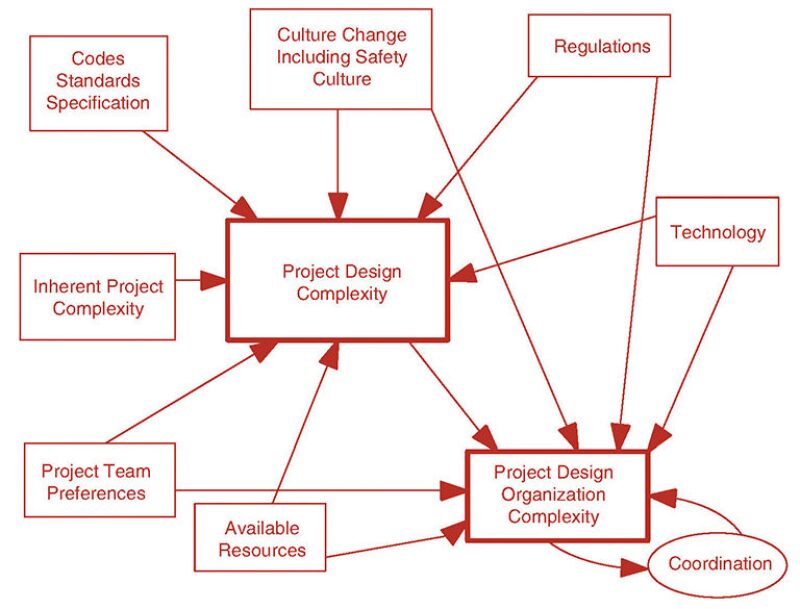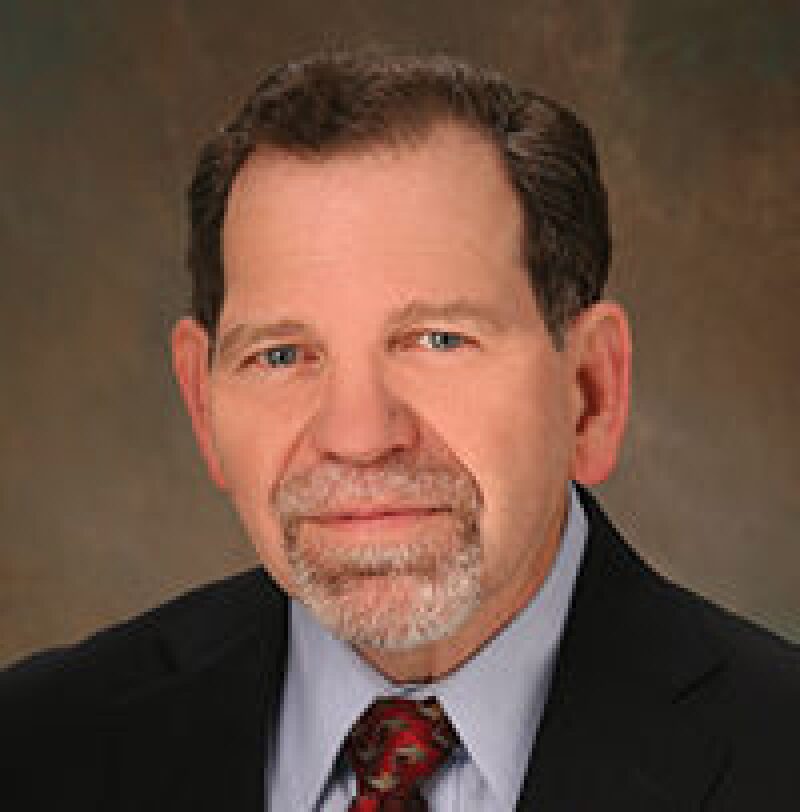A few months ago while at lunch with a project team, I heard an engineer lament about how much more difficult it is to execute a project now than in years past. Innocuous as that comment seemed, it resonated with everyone at the table, and my discussions with others on this topic have made one thing clear to me: We have a complexity problem in the industry.
With that in mind, I built a team to look at the drivers of complex systems such as the relationship between cost escalation and complexity, though other factors like schedule slippage are perhaps just as significant. We plan to start a discussion that will light the path for future data collection and analysis.
The team assembled comprises Gordon Sterling, project manager at Shell (retired), Charles Jennings, partner at Leading Edge Collaboration, Ray Rui, researcher at Independent Project Analysis, Paul Paterson, technology manager at an operator, Mike Richbourg, facilities engineer at GATE, James Deaver, engineering adviser at OFD Engineering, Janet S. Elias, engineer and cognitive scientist at GATE, and Simon Richards, consultant.
The questionnaire at the end of this article will form the basis of our interviews with selected industry veterans. We also would like to receive completed forms from the Oil and Gas Facilities readers.
Introduction to Complexity
There are many contributors to system complexity, such as entropy generation, information content, the number of nodes, and computational ability.
When studying systems, it is important to look at the ways that individual nodes affect each other. Emergent properties, or properties that emerge from a combination of simpler constituent parts, are key elements: A system is not the sum of its parts.
For example, consider an ant colony. An ant is a simple creature. Alone it will wander aimlessly and die. But put 100,000 of them together and they create a superorganism with skills in finding food, buildings nests, and fighting enemies. The properties of the colony are not properties of the individual ants.
Common properties of complex systems include:
- Multiple interconnected nodes
- Emergent complex collective behavior even with few nodes
- Generally no central control
- Presence of signaling and information processing
- Adaptation over time by learning or evolution
Types of Complex Systems

Two types of complex systems are discussed in the literature as distinguished by the properties of the nodes. Complex physical systems (CPSs) have mechanical nodes, each of which follows simple fixed rules (e.g., an ant colony). Complex adaptive systems (CASs) have intelligent agents as nodes (e.g., a project team).
A system composed of humans (CAS) has the opposite behavior of a system of ants (CPS). Doubling the number of ants in a colony will probably get twice as much work done. Doubling the number of humans on a design team will not result in doubling the work done—it may result in less work completed. As human organizations get larger, they become increasingly less efficient because of coordination losses and motivation losses.
A project can be viewed as comprising multiple interrelated systems such as:
- Physical system (CPS)
- Design organization (CAS)
- Vendor organizations (CAS)
- Construction organization (CAS)
- Operation and maintenance organization (CAS)
- The public (CAS)
Except for the physical plant itself, all systems are CAS, which are much more difficult to study. In a CPS, the behavior of each node is predictable. Each type of ant behaves like others of its type at all times. In a project team, each node is an intelligent, emotional individual with a set of objectives that may not be fully known. An individual’s behavior will be influenced by many factors and will often be surprising.
Additionally, the connections between systems are important. A complete study of project complexity would include separate studies of the individual complex systems along with a study of the interconnections between the systems. Each system is a network composed of connected nodes. Some nodes are more connected than others, and some connections are stronger than others.
Within a project organization, there are clusters, often called a small-world network. Most individuals belong to a small world where connectivity is pretty good. Connectivity between worlds is not nearly as robust.
Considering the behavior of an individual requires attention to a hierarchy of effects. Individuals are members of a subteam (their small world). Multiple subteams make up the project delivery organization, and the project delivery organization exists within an overall culture labeled “‘public”’ in Fig. 1.
Study Plan
The proposed study will include literature reviews, interviews with practicing engineers, and data collection from projects.
The literature reviews will encompass published work in social cognition, action science, complexity theory, communication theory (pragmatics), decision theory, sensemaking, and best practices for project management and control.
An early goal is to study the increases in complexity of the project design and the project organization that executes the plan.
Drivers of Complexity
Fig. 2 shows the interplay of factors hypothesized to affect the complexity of the project design and the design organization.

- Inherent project complexity—The nature of the project affects the complexity of the design. A fractured reservoir with no aquifer support will require more wells and yield a more complex subsea design. Complex fluids yield complex topsides and chemical treatment.
- Codes, standards, specification—Designs change as industry codes change. Operating companies and design firms develop standards and specifications to guide design efforts, in part to ensure compliance to applicable codes. How do individual operating company standards and specifications affect design complexity?
- Culture change—Cultures, in particular safety culture, change over time. How has design complexity changed with improving safety culture and other culture changes?
- Regulations—Regulations tend to become more onerous over time. How have new or modified regulations driven changes in complexity?
- Technology—Advancing technology is a driver of complexity. Computers and computerized control systems provide the capability to design things today that could not have been designed 30+ years ago. Improved manufacturing techniques and advanced materials provide unprecedented options to incorporate into designs. Telecommunications and project management tools allow project teams to be spread across the world.
- Project team preference—Every project team has a unique set of skills and preferences. Partners have different experiences and preferences. We make some things more complex just because we can; it can be difficult to resist the tendency to make designs as complicated as technologically possible.
- Resources—Projects are executed by people, and other resources are required. A lack of resources may affect the design and the design team complexity.
- Coordination—As the design team grows larger and geographically dispersed, coordination of efforts becomes more difficult and time-consuming.
FOR FURTHER READING
Mitchell, M. 2009. Complexity: A Guided Tour. Oxford University Press.
Miller, J.H. and Page, S.E. 2007. Complex Adaptive Systems: An Introduction to Computational Models of Social Life. Princeton University Press.
Reid, D., Dekker, M., Paardekam, A.H.M. et al. 2014. Deepwater Development Non-Technical Risks—Identification and Management. Paper presented at the SPE Annual Technical Conference and Exhibition, Amsterdam, The Netherlands, 27 October. SPE-170739-MS. http://dx/doi.org/10.2118/
170739-MS.
THE COMPLEXITY STUDY QUESTIONNAIRE
Please consider projects spaced over a period of time of at least a few years, preferably from 10 to 20 years. If you worked on two similar projects that can be compared, that would be preferable. If not, then try to imagine how the project you are working on now would have been different had it been done from 10 to 20 years ago. Consider a project you did from 10 to 20 years ago and imagine how it might be different if executed today
Answer only the question(s) that resonate with you and omit the ones that are less important. It is not necessary to provide a comprehensive answer.
Inherent project complexity. Are the projects you work on now inherently more complex than they used to be? How has it affected the design and the design team makeup?
Codes and standards. How have changes to codes, standards, and specification affected the project design? More or less complex? Have the changes to codes or standards contributed meaningful improvement in designs?
Regulations. How have regulatory changes or differences affected your designs or design organizations?
Culture change. Safety culture has changed significantly over the past 30 years. How are your designs different? How are your design teams different? Which studies are done today that were not done years ago? What do we learn from them? Which organizations or communities are involved now that were not in the past? How are they involved?
Technology. How has technology changed what is actually built? Are the systems being built significantly more complex? What is the benefit of the increased complexity? How has communication technology changed the scope and makeup of project organizations? Does the increase in design team complexity or scope result in improved design?
Design team preference. Which “simple preference” changes do you see in projects (design changes just because we can)?
Coordination losses. As an organization gets larger and more diverse, does the coordination of individual efforts become more difficult? Have you seen an increase in coordination problems on projects? Has communication technology improved coordination?
Emergent behavior. Did a simple error, change, or delay in one area of the project unexpectedly cause a significant problem elsewhere?
Resource. Did a shortage of skilled personnel or other resources affect the project design complexity?
Follow-up. Are you willing to speak to a member of the study team if more information is desired?
Please send completed surveys to hduhon@gateinc.com.

He can be reached at hduhon@gateinc.com


